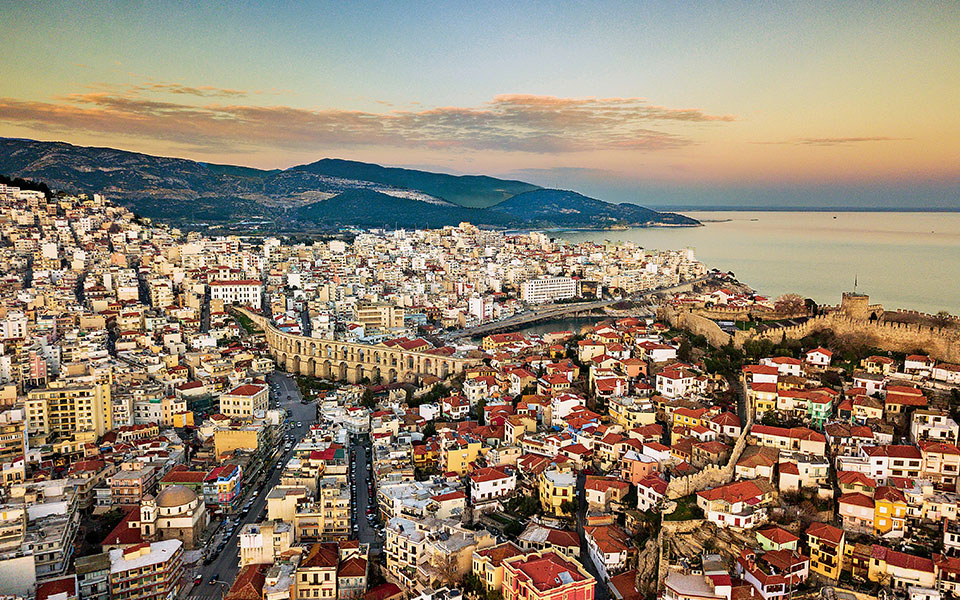Depending on the season, fishing vessels, ferries, sailboats and cruise ships all drop anchor at Kavala’s two ports – the old and the new. This coastal city, which rises up from the sea like an amphitheater, counts approximately 50,000 inhabitants, split among the Palia Poli (old town) and the Nea Poli (new town).
The latter may enjoy a larger share of Kavala’s residents; however, it is the former, constructed atop the Panagia peninsula, that holds the edge in terms of charm. Elements harking back to a variety of eras and architectural styles coexist throughout the narrow lanes of the old quarter, under the commanding Kastro (castle).
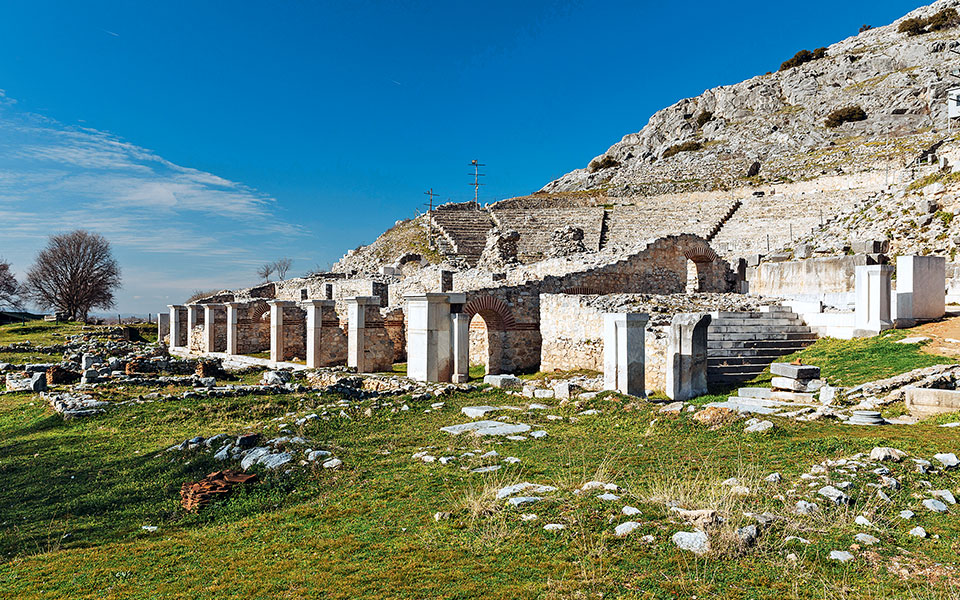
© Nikolas Mastoras
Times gone by have left behind important monuments in the broader area, such as the now UNESCO-protected Archaeological Site of Philippi, and the Baptistry of St Lydia, where the Apostle Paul founded the first Christian church on Greek soil, in AD 49-50.
There is also the unique Imaret, an exceptional sample of Islamic architecture, which also enjoys a “double identity” – that of hotel and monument, as well as the early 16th-century Kamares, which manage to stand apart amidst the buildings in the new town of Kavala. According to the prevailing view, the Kamares were constructed between 1520 and 1539 on top of an even older Roman aqueduct, so to as cover water supply needs, linking Panagia with the springs at Palia Kavala.
We have come to love Kavala not only on account of all the beautiful heritage monuments and buildings it has managed to preserve, but also because, being a veritable Greek urban jungle, the city moves us. Moreover, the moment the warm weather arrives, the city promises refreshing dips at Batis, Tosca and Palio. Just a tad further afield lie wonderful beaches, including Ammoglossa Keramotis and Ammolofi, offering turquoise waters and fine sand.
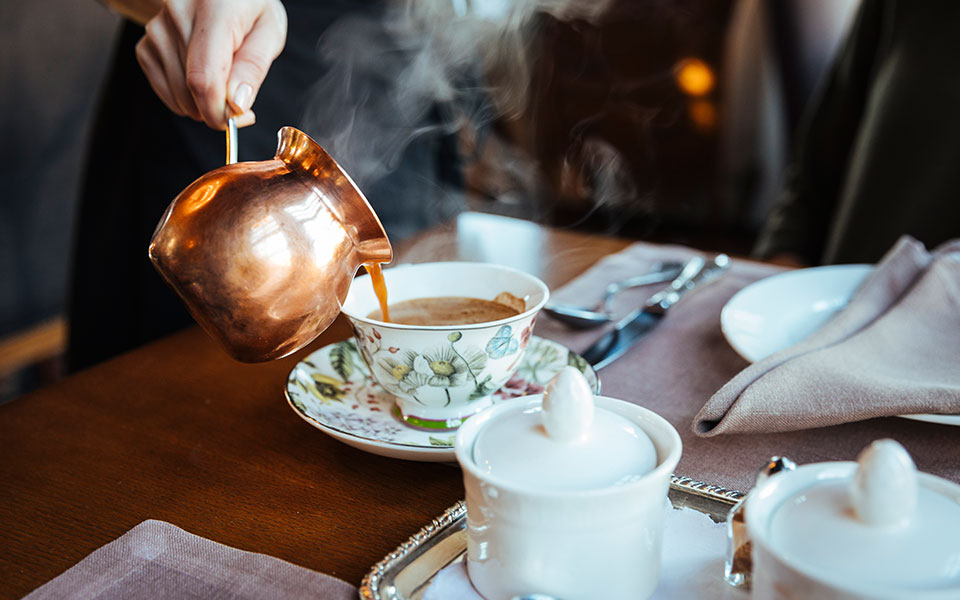
© Nikolas Mastoras
THE IMARET: A LANDMARK
Velvety pomegranate juice served in a wine glass, soft jazz music and a group of French guests seated next to us, all come together to lend a contemporary cosmopolitan note to the bar at the Imaret. It would be no exaggeration to state that this historic hotel / monument, with its characteristic lead roof spanning stylish vaults, elevates Kavala as a travel destination.
Spread out over an area of 4,200 square meters, the Imaret initially served as a seminary during the period of Ottoman rule. It was later closed, and remained so for many years, until it was used as a place to accommodate immigrants. It was in 2001 that the Missirian family leased it for 50 years from the Eqyptian Waqf Organization, and breathed new life into it. Its 61 vaulted cells, which had once welcomed students, have since been transformed into 30 atmospheric rooms.
Everything on and around the Panagia peninsula becomes a starting point for discussions that never end, like the one we had with Anna Missirian on theocratic regimes and education systems, the coexistence of cultures and civilizations, the influential Greek writer Alexandros Papadiamantis (1851-1911), who had once referred to the Imaret as a tebelohanio (that is, an inn for the lazy) and also about the hotel’s uncertain future after its 50-year lease reaches its end.

© Nikolas Mastoras
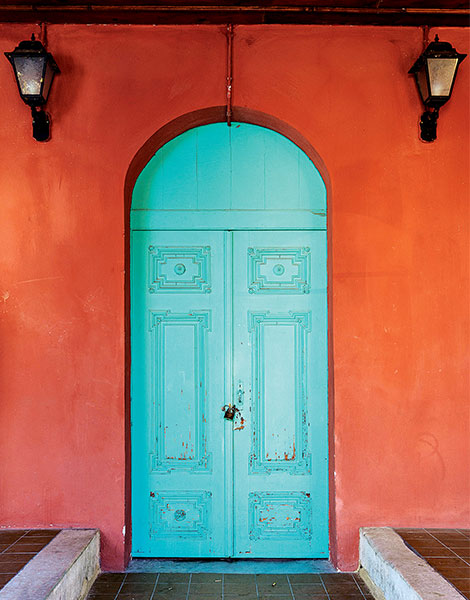
© Nikolas Mastoras
Even though the Imaret as a hotel may maintain a somewhat elitist air, anyone wishing to get to know it as a monument may do so daily, for just 5 euros, on a tour of its mosque and its other areas. Of course, a drink in its bar or a meal at its restaurant is also always an ideal option, open to all. Similarly, the House of Mohammed Ali, as it is known, has also been leased from the Eqyptian Waqf Organization. Situated opposite the church of Panagia, the House of Mohammed Ali operates as a museum, and is also the headquarters of the MOHA Research Center. The latter was founded in 2006, with the aim of bridging the cultural differences between the East and West.
For Anna Missirian, MOHA and the Imaret constitute “meeting points for cultures. One empire is succeeded by another, and a theocratic regime succeeds some other system, but what remains alive is culture, as a continuation.” Everything here speaks of coexistence and multiculturalism. Mohammed Ali (1769-1849) – or Mehmet Ali, as he is referred to in Turkish – was born in Kavala, which he came to love from a very early age.
Complementing the wealth of Ottoman buildings is the Palia Mousiki – as the Halil Bey Mosque has come to be known. It was constructed on top of the Paleochristian church of Aghia Paraskevi, as can be attested by taking a look through its glass floor.
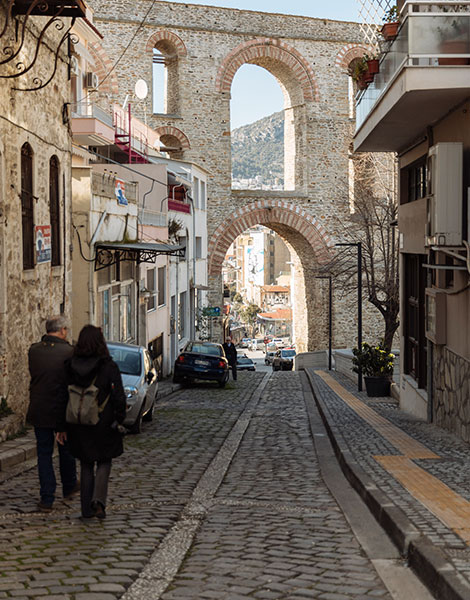
© Nikolas Mastoras
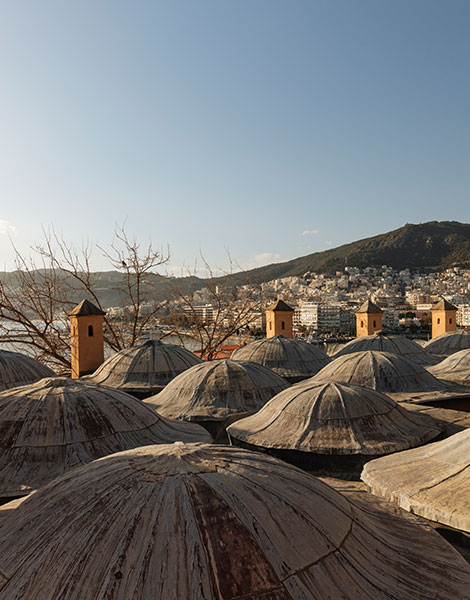
© Nikolas Mastoras
THE CAPE OF PANAGIA
The few tavernas and cafe / bars of the old town are located across from the Imaret, on Theodorou Poulidou St. The prevalent feature found in the buildings in the narrow lanes of the Panagia district is Macedonian architecture coupled with the Eastern influences brought back by master builders from trips abroad. These overseas influences include the sachnisi (a traditional type of bay window supported by wooden beams on building facades) and the bagdati (a wattle-and-daub technique, which has come from Baghdad and involves the use of wood and other natural materials in the construction of building walls).
Amidst these jut out single, detached homes dating to more recent construction phases; fortunately strict building codes have ensured that strolls up the hills leading to the castle remain lovely. These strolls are even lovelier if you go on them with local people who love their area, like civil engineer Thodoros Mouriadis, who, through his descriptions and stories made us feel like a part of the neighborhood. We stop along the way to gaze at the view of the sea, to listen to the sound of waves pounding against the crags of the cape, and to look at flocks of pigeons lending motion to the landscape.
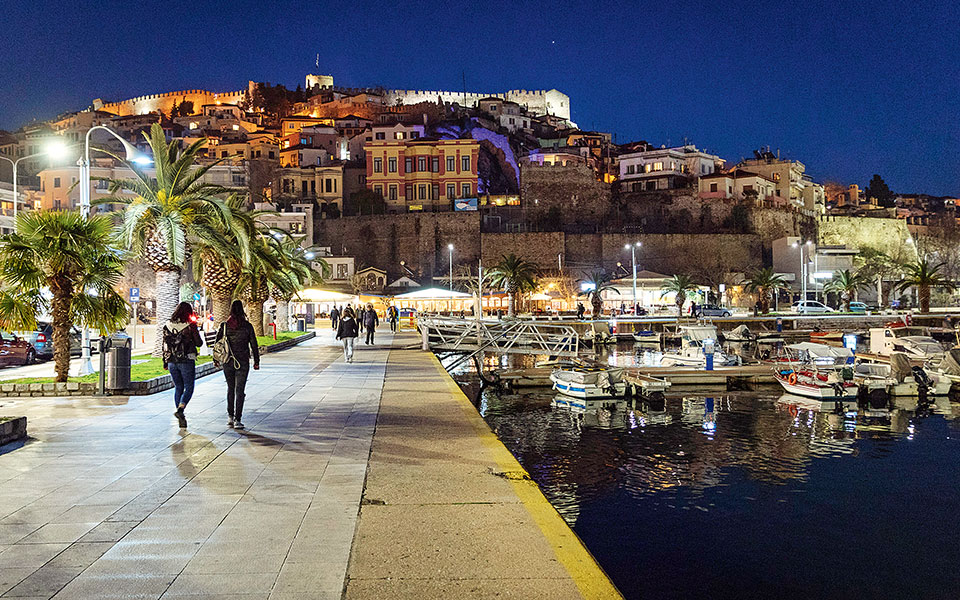
© Nikolas Mastoras
After ascending the circular interior staircase of the fortress – provided that you do not get stuck; that is just how narrow it is – you are rewarded with an extremely enjoyable 360-degree vista and view of the entire city and the Thracian Sea. This fortified settlement constituted the entire city of Kavala, up to the year 1864. It was confined to the area of the triangular cape. In fact, its earliest traces are lost in antiquity, when it was named Neapolis, the walls of which are still to be found along the perimeter of the rock.
In Byzantine times the city was called Christoupolis. In terms of offering a travel experience, Panagia clearly is of great interest, and the more you walk around the area, the more it wins you over. The good news is that the tourism-related development of yet another landmark building has been set into motion. The historic Spiti tou Stratigou (House of the General), in which – to this day – the military chief of the city resides, is to be converted into a hotel, thus enriching the city’s supply of accommodation spaces.
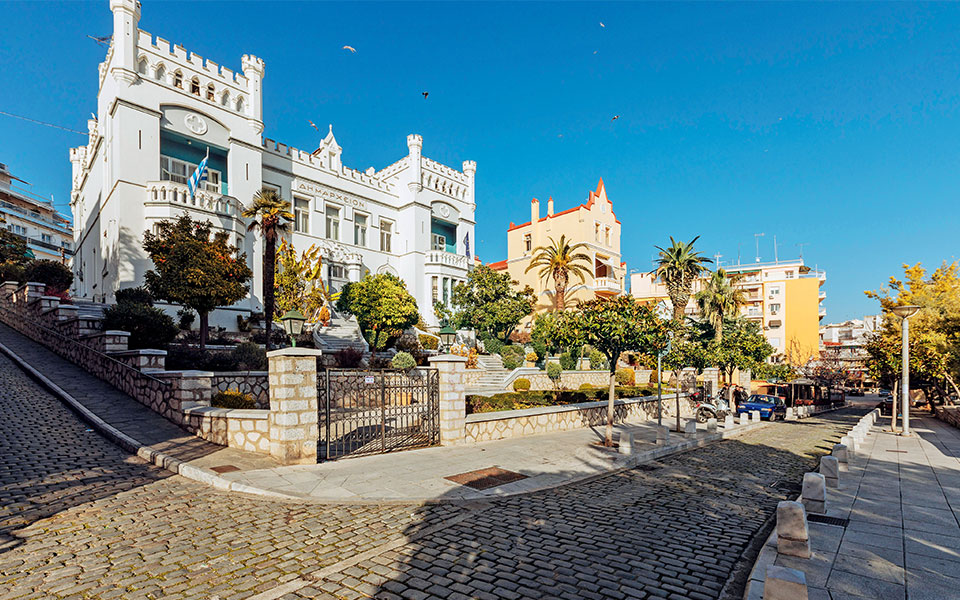
© Nikolas Mastoras
NEW CITY, NEW USES
Kavala began to extend beyond the limits of the Panagia area in the mid-19th century, owing to the burgeoning tobacco trade of that period and the concomitant affluence that this produced. The city came to be built on the perimeter around it, and various trends in residential construction were adopted.
This is clearly visible on Kyprou St with the Town Hall of 1879, the Lazariston monastery and the Megali Leschi (the Great Club), the latter an imposing building – both externally and internally – with manor-style halls whose ceilings exceed a height of 10 meters. At present, the restoration work being carried out on this building also happens to be drawing to a close.
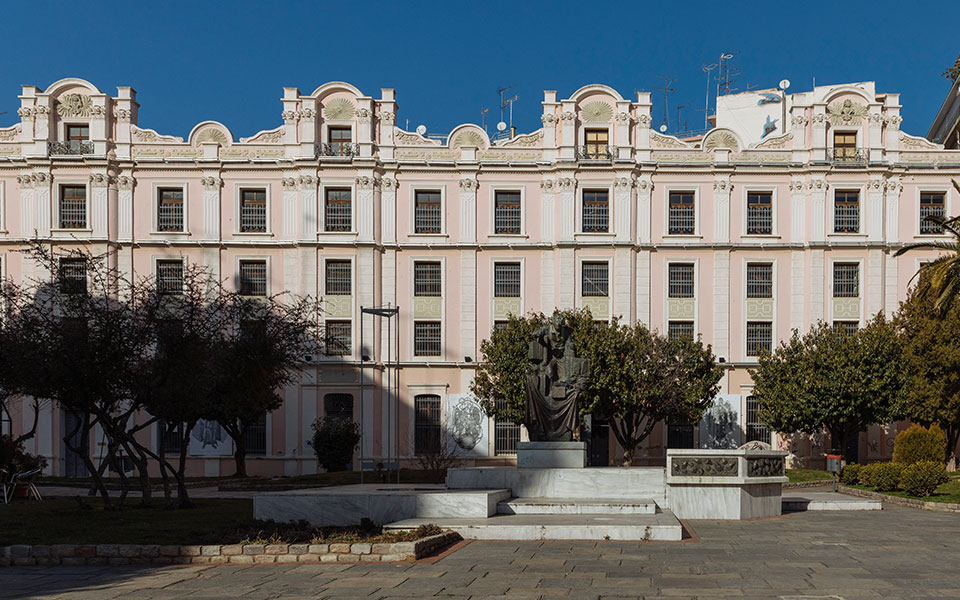
© Nikolas Mastoras
Overall, of course, Kavala is mainly composed of apartment buildings, and this is a reason we liked the Black Drop espresso bar on Kapnergati Square so much, as it was created with a very contemporary sensibility and outlook, consequently upgrading what could be referred to as the city’s “discourse” with concrete. It is situated almost right next to the Municipal Tobacco Warehouse, one of the large buildings erected during the peak of the tobacco trade and abandoned following its gradual demise.
Redevelopment work is also set to begin shortly on the square itself. Another former tobacco storage facility located nearby has already been transformed into a shopping center, while many more of these historic and heritage buildings await their investors.
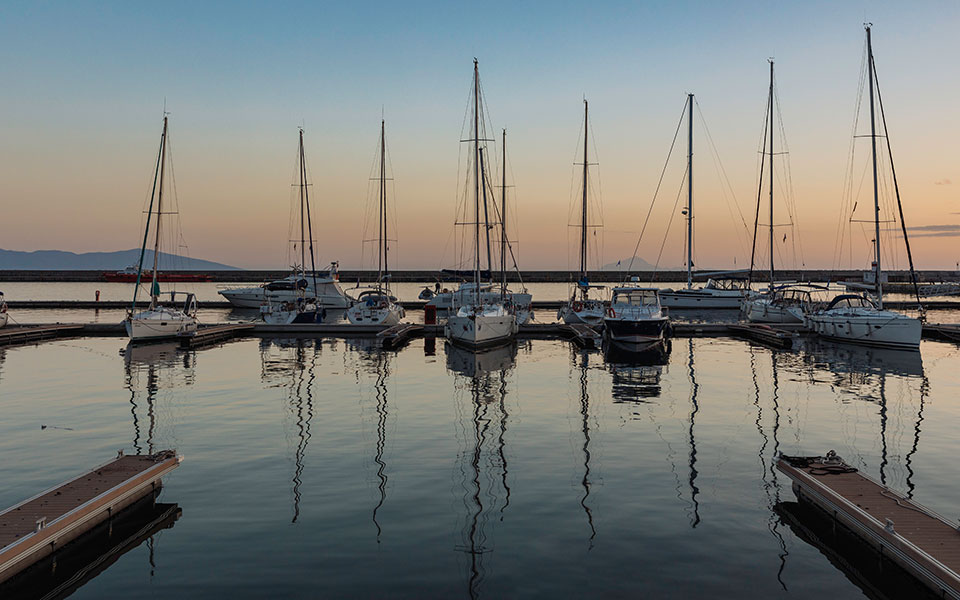
© Nikolas Mastoras
SEAWARD GAZE
For about a year now, the new floating piers have markedly improved the quality of services offered and the number of vessels choosing to dock at the port of Kavala. This has also propelled growth in the coastal and maritime tourism industry.
Fishing vessels bring back fresh catches daily, and Kavala residents rarely pass up the opportunity to indulge in a midday tsipouro accompanied by a seafood meze. This list of mezes might include the likes of smoked mackerel, or crispy, freshly fried mullet, as served up by the Nafpigion, a cafe / ouzerie tucked away in the old boatyards of the city.
Kavala holds some other little temptations in store, such as sleeping with an open window in a room at the Lucy Hotel, to the sounds of waves lapping. This year, the hotel, which is built on Kalamitsa beach, is organizing the second edition of its “art residencies,” an event offering insights into Kavala’s intimate relationship with contemporary art.
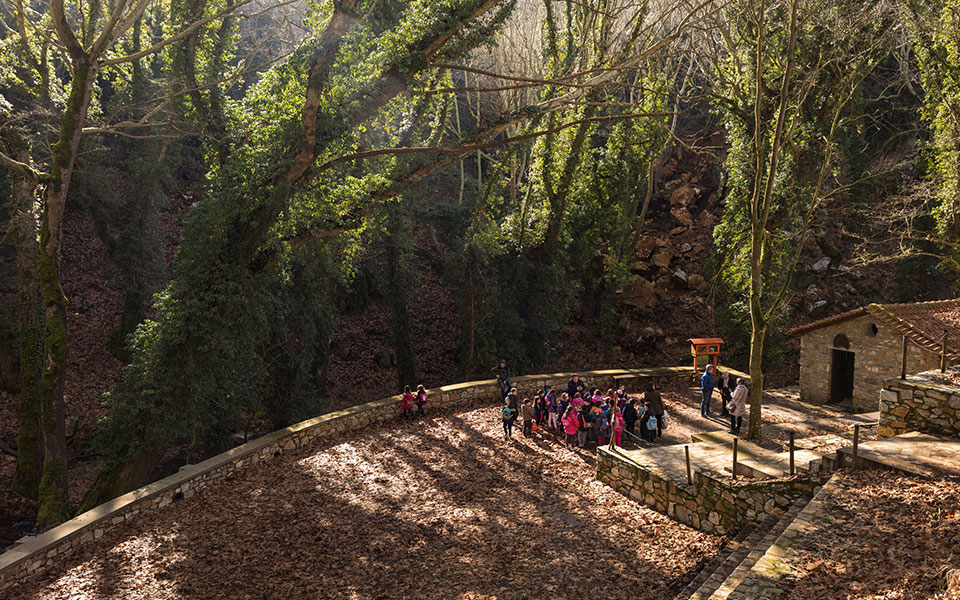
© Nikolas Mastoras
Two or three days are never enough to get to know a city. Just before departing, we caught a glimpse of the very beautiful ceramic creations of Kostas Karakitsos, who also organizes seminars, but did not have the time to meet him in person.
Be sure to explore Kavala, to get to know its people, be prepared for two or three tsipoura too many, and do not hesitate to treat yourself and indulge in a hammam at the Imaret, and a massage at the hands of Grigoris or another masseur / therapist there.
Another type of wellness space is the Pilotherapeftirio (mud therapy center), which opens June 1 and attracts some 10,000 visitors each season. Take a walk along the trail that links Palia Kavala (a village with no cell phone signal) with the new town. You may or may not be lucky enough to see water cascading down its waterfalls; in any event the trail is easy and the landscape filled with unexpected surprises, such as rock paintings and disused quarries, which lend the area an otherworldly feel. (Be sure to check out the Hellenic Mountaineering Association of Kavala site for information on hiking routes). Stop briefly and stand in silence, and you just might hear a young woodpecker tapping rhythmically on a tree trunk. Return and experience every season of the year here, and you will discover a different Kavala each time.
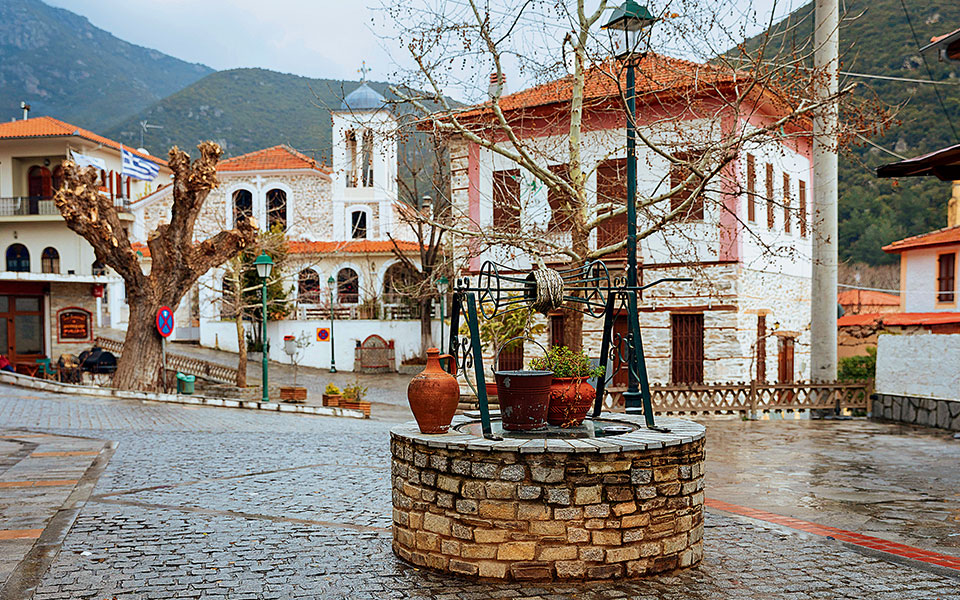
© Nikolas Mastoras
AN EXCURSION TO MOUNT PANGAION
Mesoropi is a wonderful, picturesque village nestled on Mt Pangaion, and is chock-full of pleasant surprises. The list includes the visitable Ktima Biblia Chora winery (tel +30 25920.449.74-6), fine tavernas and an interesting restaurant called Kladi Elias, with influences from the Mediterranean (tel +30 25920.932.93, 697.330.6955); the latter also offers an inn of the same name located above the restaurant (starting from 120.00 euros).
Exceptional – but traditional, this time – gastronomic experiences await one and all in Nikisiani. Sample the oven-roasted young goat and the tsigerosarmades, a special kind of dolma containing offal, at the Taverna Kastanies (tel +30 25920.618.17, 697.432.4938), which also sets itself apart on account of its views and proximity to the mountain.
Finally, Mt Pangaion also has some very lovely hiking trails in store.
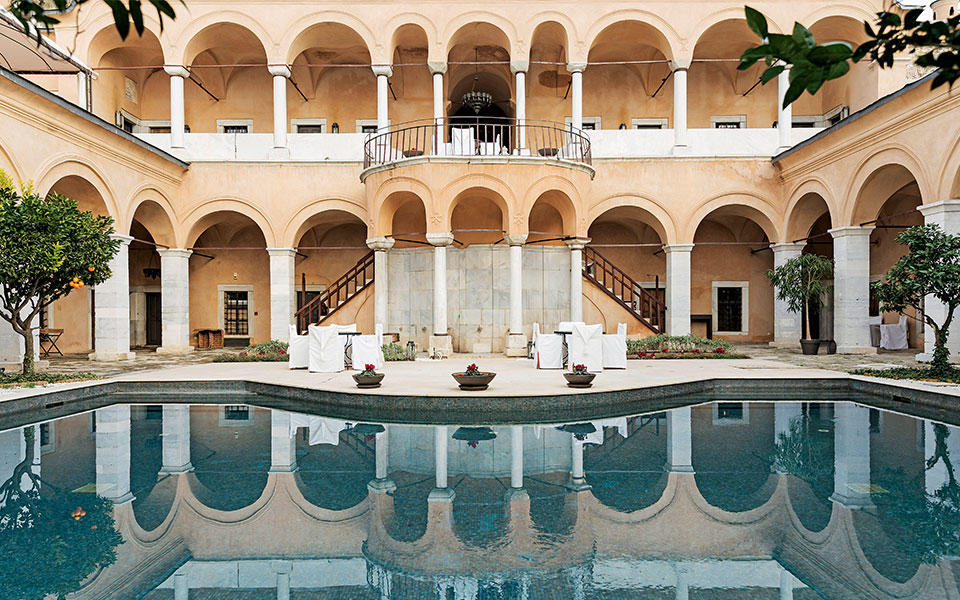
© Nikolas Mastoras
Transportation
If arriving by car from Thessaloniki, the drive will take a shade under an hour, while the fuel and toll expenses will amount to roughly 15 euros (each way). If Athens is your starting point, then your ride should take from 5.5 to 6 hours, while the fuel and toll costs will total approximately 110 euros (each way), for a mid-size vehicle.
If air travel is more your thing, Aegean Airlines flies every day out of Athens to Kavala and back.
Accommodation
The Imaret (Theodorou Poulidou 30, tel +30 2510.620.151). This hotel offers a refined and sophisticated atmosphere that bears elements from bygone times in all of its spaces – from the bar, the library and the restaurant to the interior courtyards with their orange trees, the pool and the cascading waters.
Through its meticulous attention to detail, the hotel keeps the feeling of special ceremony alive; this is apparent both in its rooms with their linen fabrics and fine scents, and in the hammam areas. In these, authentic practices have been adopted that date to the 18th century and use almond and myrrh as their base. It also features conference halls. Its restaurant is being renovated at present. Starting at 300 euros for double occupancy.
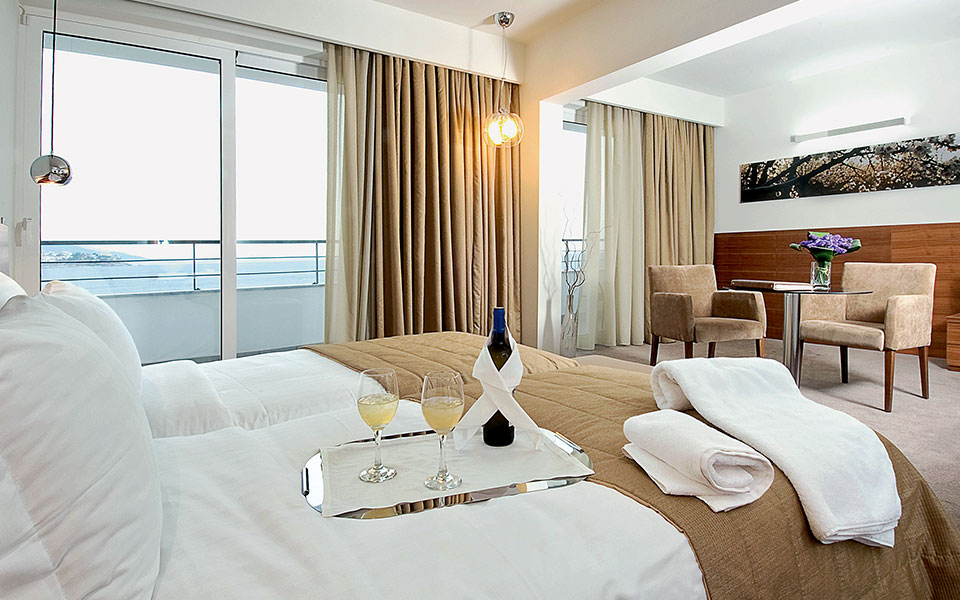
The Lucy Hotel (Akti Kalamitsas, tel +30 2510.600.060). This large hotel complex lies just a stone’s throw away from the city center, constructed on the Kalamitsa coast, with a sea view and close to the sand. It features an outdoor pool, can organize large conferences and other events – such as the 2nd Art Residency for Visual Artists, slated for June 2018. Starting at 80 euros for double occupancy.
Egnatia City Hotel & Spa (139 Evdomis Merarchias , tel +30 2510.600.250). A centrally located hotel with a restaurant, bar, conference center and spa. Starting at 64 euros for double occupancy.
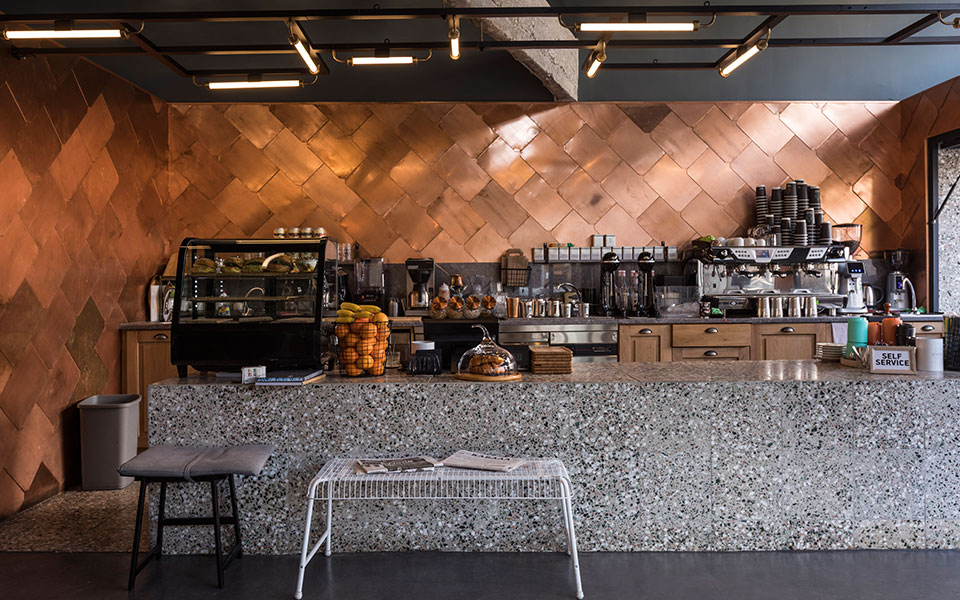
© Nikolas Mastoras
Food & Drink
Kavala is home to many wonderful and cozy little tavernas that serve not only meat dishes but seafood as well, such as the Koutouki tis Kamaras (20 Nikotsara Sq, tel +30 2510.231.291) and the Psaraki (3 Ethnikis Antistaseos, tel +30 2510.211.750).
Be sure to check out the Nafpigion, an authentic tsipouro taverna nestled in the boatyard area of Kavala, as well as the Apiko (tel +30 2510.227.173), located in a renovated space and featuring brand-new recipes.
The Palladio Social Cave (4 Erythrou Stavrou, tel +30 2513.010.707) serves coffee, drinks and brunch, and organizes theme nights. The Tsalapeteinos (tel +30 2511.111.073) is an open-all-day hangout that offers coffee and drinks – and also food for some hours each day.
The To Mikro Nisi conjures up the image of a British pub, and plays funk, soul, jazz and rock. For coffee and sandwiches try the Black Drop (1 Kassandrou, tel +30 2510.222.203). The 1901 (33 Theodorou Poulidou, tel +30 698.464.5868) is considered an ‘all-time classic bar’ in Panagia, while the Lobster (1 Ethnikis Antistaseos, tel +30 693.714.5621) is an all-day bar on the beach.
The Oinoi is a ‘purebred’ wine bar (2-18 Kimonos, tel +30 2510.222.266), located near Kamares. For cocktails, head to Derelicte (2 Lambrou Katsoni, tel +30 2510.222.232).
Info: For more information, be sure to click on www.visit-kavala.gr
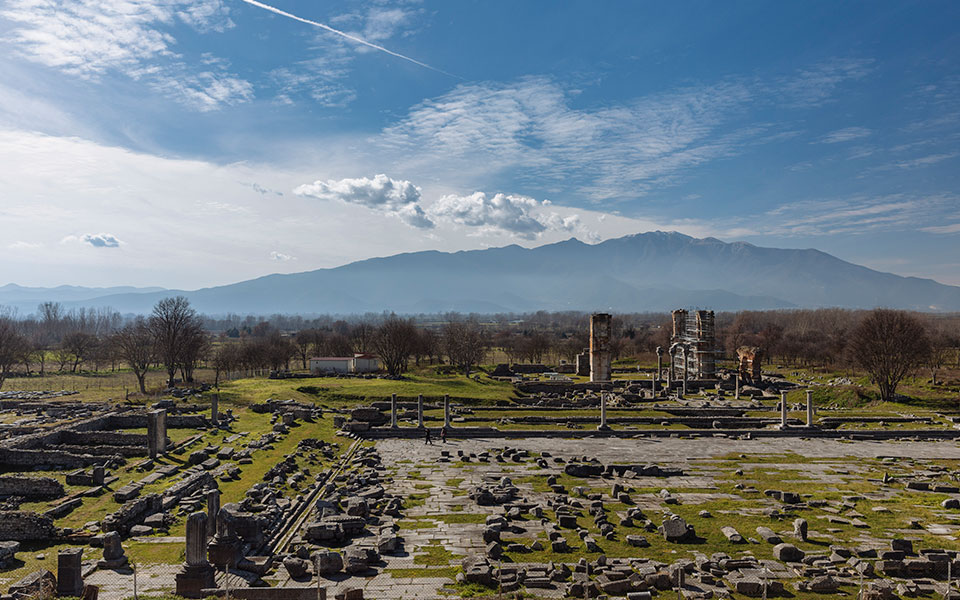
© Nikolas Mastoras
Culture
The Archaeological Site and Museum of Philippi, tel (+30) 2510.516.470. Hours of operation: 08:00-15:00 during the winter season. Combined ticket: 3 euros during the winter season, and 6 euros as from April 1.
The Sacred Baptistry of St Lydia, tel (+30) 697.670.3139. Visiting hours: 08:00-16:00 (winter schedule). Free admission.
The House of Mohammed Ali, tel (+30) 2510.620.515. Visiting hours: 09:00-15:00 daily except Mondays and Tuesdays (winter schedule).

